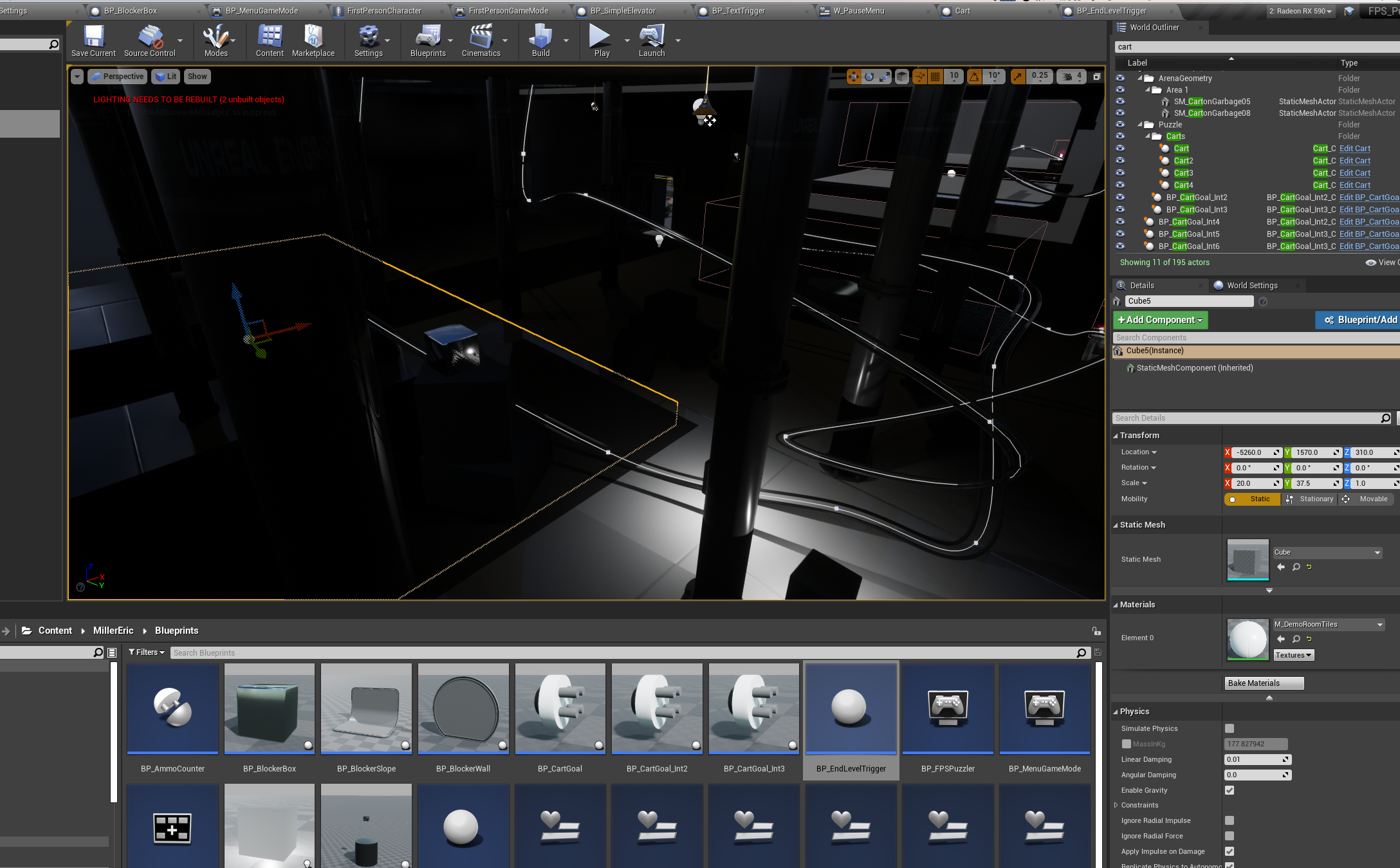Got a little carried away with those splines, huh?
Here’s a Google Drive link to the demo (and associated project files): Link
My First Attempt at a Puzzle Game
I got the email from Epic.
After applying for the Epic Games Internship program a few weeks ago, I was fortunate enough to get the opportunity to proceed to the design test phase of the selection process. When I got the email, I was already knee-deep in a 31-hour Udemy course, trying my best to get back up to speed with C++. The nerves and excitement both hit pretty hard.
But as for making the demo… It was rough.
While I had spent some time with Unreal Engine at Full Sail, I still wasn’t nearly as comfortable with it as Unity. Nevertheless, I tried to set aside those concerns and make an honest effort to put something together. After spending the first three days starting and scrapping one idea after another, I began to seriously consider to create a mission in Shadowlands Returns rather than build everything from scratch.
I fiddled around with the Shadowlands editor for a few hours, and found myself really enjoying the process of crafting branching story paths. Setting up enemy encounters, laying out floor tiles, and updating quest goals all seemed fairly straightforward and behaved as expected. But as nice as the editor was, I wanted to deliver something using Unreal.
With only three days left before the deadline, I decided to try my hand at making a puzzle game. I’d learned a bit about using splines and moving things along them (as research for my scrapped on-rails shooter idea), so I decided to repurpose some of those blueprints for this new puzzle game. By day five, I had the majority of the level blocked out, and the introductory gameplay setup in place. There were still issues with the changing state of the objects the player needed to send into the goals, but I was making progress.
I was starved for sleep during the last couple of days, wearily dragging myself around the workplace, hoping to get by to my demo in time to get it into a somewhat presentable state. The puzzles still felt unintuitive. The objects designed to obstruct the player didn’t behave as expected when they collided with the objects traveling towards the goals. I hadn’t even fully defined the win conditions.
My work reflected my anxiety. The spline paths became increasingly erratic. The level geometry no longer cleanly fit together. At one point, I considered placing developer dialog triggers around the level – a sad stream of consciousness conveying to the reviewer what a wreck I knew the game had become.
I considered giving up.
The day before the deadline, an Epic Games representative reached out to me. While the message did mention that I could ask for an extension to the deadline, delivering work behind schedule right off the bat just didn’t seem like a good idea. I didn’t know how many candidates would take them up on the offer, but I didn’t want to be one of them.
“Great Artists Ship”
By no means am I great at this. I wouldn’t even say I’m good at it. Not yet.
Game development is the most challenging thing I’ve ever attempted. It’s an odd hybrid of software engineering proficiency and traditional artistic craftsmanship. And that second part – craftsmanship, craft – is why I pursued the internship in the first place. I want to surround myself with people who can make me better.
If I’m being totally honest, I have no idea how far I’ll go or where I’ll end up. But I’m too stubborn to quit. I’m finishing the Dropbox upload as I type this. And UE4 sounded the ‘Finished Packaging’ chime just as I typed this very sentence. I’ll send Epic what I have. No matter what happens after that, I’m going to continue pushing forward. I’m going to continue learning. I’m going to continue making games.


